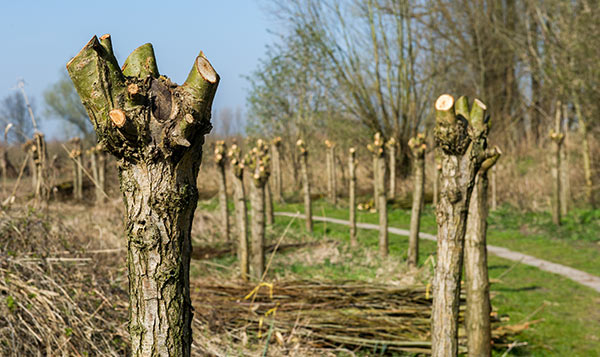
Pollarding is a pruning technique used for many reasons, including:
- Preventing trees and shrubs outgrowing their allotted space
- Pollarding can reduce the shade cast by a tree
- May be necessary on street trees to prevent electric wires and streetlights being obstructed
These are a few of the plants it can be used on:
- Ash (Fraxinus)
- Common lime (Tilia × europaea)
- Elm (Ulmus)
- Elder (Sambucus)
- Gum (Eucalyptus)
- London plane (Platanus × hispanica)
- Mulberry (Morus)
- Oak (Quercus)
- Some species of Acer (A. negundo and its cultivars)
- Tulip tree (Liriodendron)
- Poplar
- Willow
Pollarding a tree is usually done annually, and would need to be carried out every few years to avoid potential problems. This usually involves hiring an arborist, so can be expensive. Why not consider the following before pollarding: Plant a tree small enough to fit its allotted space.
This will only need minimal pruning, or try other pruning options suitable for large trees, such as crown thinning or crown reduction. The pollarding of a tree is the most drastic form of pruning, but for some species (such as poplar or willow) in the wrong environment, this form of pruning is essential.
TD Trecare has full public liability insurance up to the value of £10,000,000. If you need any tree work to be done, you can rely on TD Treecare to provide a professional and thorough job. Please call 07770 340 609 or email us at tim@tdtreecare.co.uk today to arrange a no obligation, complimentary quotation today!


